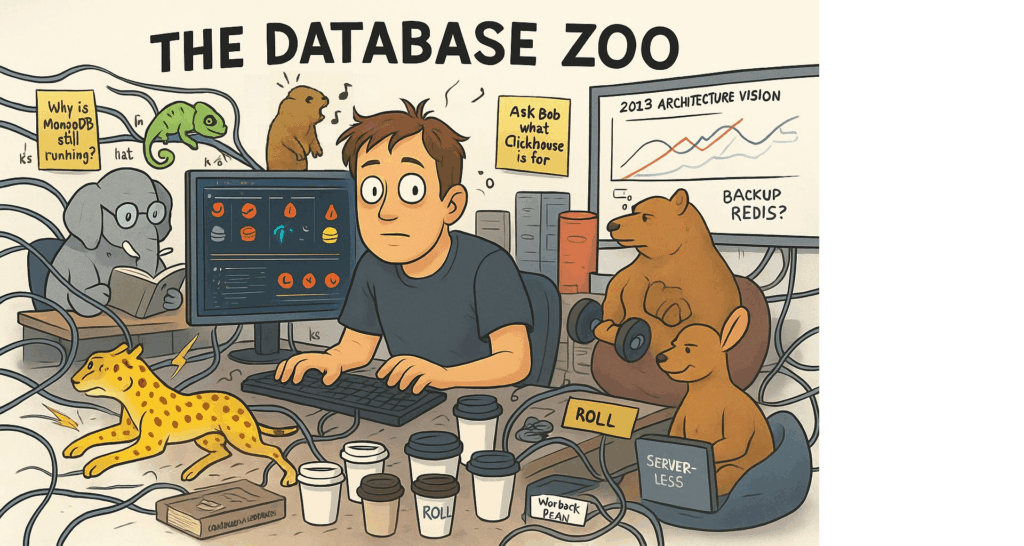It starts harmlessly enough:
◽ Postgres for core data 💪
◽ Redis for caching ⚡
◽ Elasticsearch because “search is hard” 🤓
◽ DynamoDB… no one remembers why, but it’s in prod now 😬
◽ ClickHouse for analytics because someone read a blog post about it once 📊
◽ SQLite for that one internal CLI tool, obviously 💡
◽ Oh, and MongoDB is still running that one service from 2019 ⏳
Fast-forward 12 months and your stack looks like a 𝗱𝗮𝘁𝗮𝗯𝗮𝘀𝗲 𝗯𝘂𝗳𝗳𝗲𝘁…
Except now you need 𝗿𝗲𝗮𝗹 𝗴𝘂𝗿𝘂 to monitor it, a second team to maintain it,
and a 𝘁𝗵𝗲𝗿𝗮𝗽𝘆 𝘄𝗵𝗶𝘀𝘁𝗹𝗲𝗿 𝗺𝗮𝗿𝗺𝗼𝘁 for on-call rotation.
𝗔𝗿𝗲 𝘁𝗵𝗲𝘀𝗲 𝗰𝗵𝗼𝗶𝗰𝗲𝘀 𝘀𝘁𝗿𝗮𝘁𝗲𝗴𝗶𝗰… 𝗼𝗿 𝗷𝘂𝘀𝘁 𝘀𝘆𝗺𝗽𝘁𝗼𝗺𝘀 𝗼𝗳 𝗱𝗲𝘃𝗲𝗹𝗼𝗽𝗲𝗿 𝗼𝗽𝘁𝗶𝗺𝗶𝘀𝗺?
(aka “sure, I’ll just spin up one more DB – what could go wrong?”)
❌ 𝗦𝗼𝗺𝗲 𝘀𝗶𝗴𝗻𝘀 𝘆𝗼𝘂’𝗿𝗲 𝘀𝘂𝗿𝘃𝗶𝘃𝗶𝗻𝗴, 𝗻𝗼𝘁 𝗺𝗮𝗻𝗮𝗴𝗶𝗻𝗴:
◽ Backups? “I think they’re happening…”
◽ Nobody touches the legacy MongoDB because it might be possessed 👻
◽ Every new feature adds a new datastore – and a new panic attack
◽ Your monitoring dashboard looks like a spaghetti monster
❔ 𝗦𝗼 𝘄𝗵𝗮𝘁’𝘀 𝘆𝗼𝘂𝗿 𝗿𝗲𝗮𝗹𝗶𝘁𝘆?
Are you keeping things tight with 1-2 core databases?
Or just leaning into the chaos with no limits?
